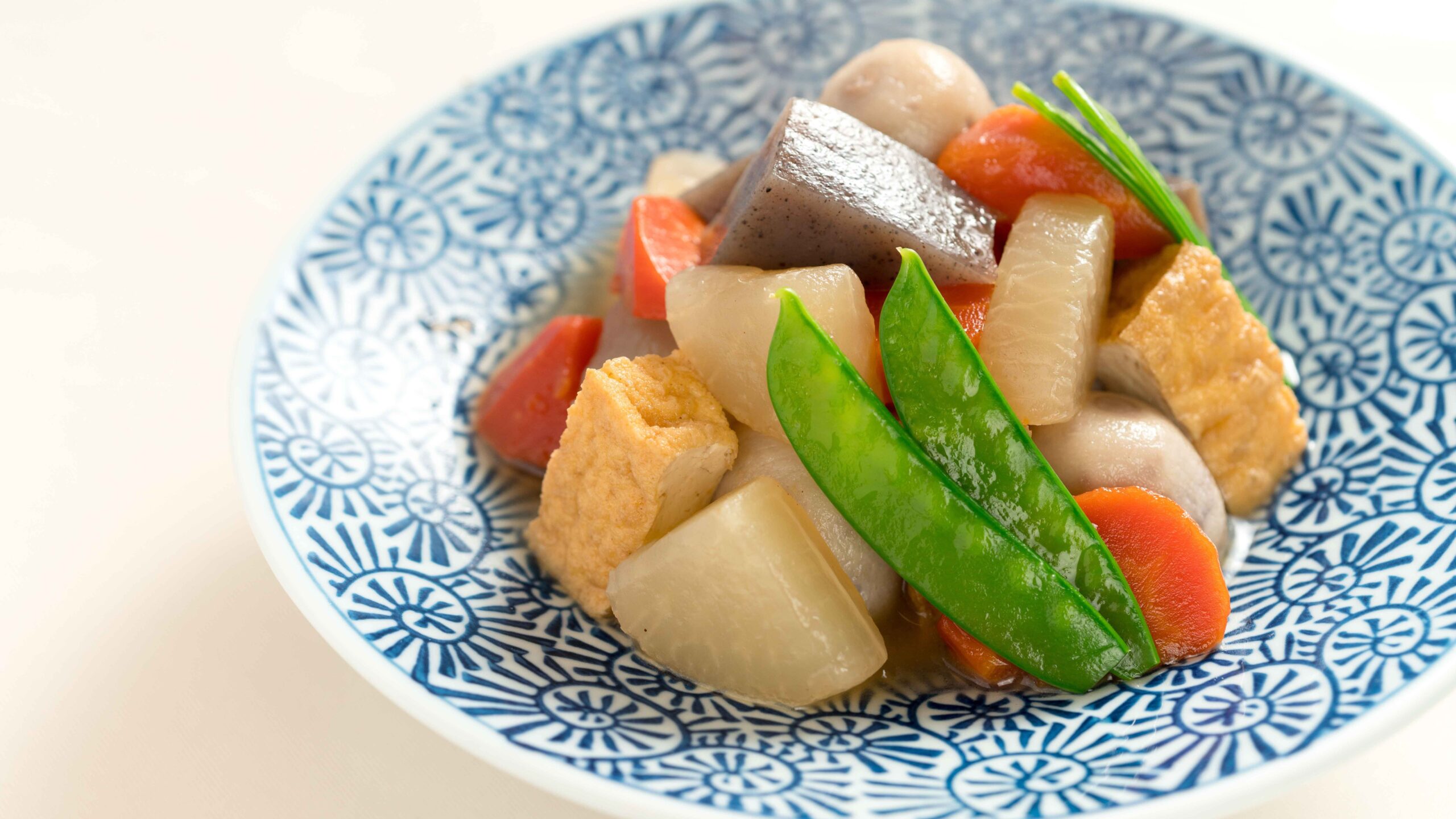
Alright, let’s talk about a classic from Nara – “Nara Noppe”! It’s a hearty and comforting stew that’s been a staple in the region for ages. While you’ll find “Noppe” dishes throughout Japan, Nara’s version is special. It’s a “shojin ryori” dish, which means it’s vegetarian, and it gets its rich flavor and smooth texture from the humble taro root. Trust me, it’s the kind of dish that warms you up from the inside out. Let’s get into the details!
Dish Name: Nara Noppe
- Region / Location: Nara Prefecture (throughout the prefecture)
- Primary Area of Tradition: Nara Prefecture
- Main Ingredients: Taro root, deep-fried tofu (atsuage), daikon radish, carrot, dried shiitake mushrooms, konnyaku
How It’s Eaten / Served
Nara Noppe is a hearty stew packed with taro root, daikon radish, carrots, and other vegetables. What makes it unique is that it’s a “shojin ryori” dish, meaning it’s vegetarian. The broth is made from kombu (kelp) and dried shiitake mushrooms, and the taro root breaks down as it cooks, giving the stew a naturally thick and velvety texture. You can enjoy it as a warming soup on a cold day or as a side dish to accompany a meal. Either way, you’ll get a good dose of umami from the broth and the sweetness of the vegetables.
Cultural Background and Preservation
Nara Noppe is a traditional dish with deep roots in Nara’s history. It’s closely tied to the “On-Matsuri” festival held at Kasuga Taisha Shrine every year on December 17th. Leading up to the main event, on December 15th, “Yamato Samurai” (who perform the festival rituals) purify themselves at the “Oshukusho Festival,” where Nara Noppe is served to them and to visitors. The On-Matsuri festival began in 1136, when Fujiwara no Tadamichi offered prayers for the peace of the people during a time of famine and epidemics. It’s a major event that marks the end of the year in Nara.
In Nara, there’s a long-standing tradition of eating Noppe in connection with the On-Matsuri festival. Around this time of year, you’ll even find special 3-4cm thick pieces of “atsuage” (thick fried tofu) sold specifically for making Noppe. Today, Nara Noppe is still enjoyed in homes throughout the prefecture and is even served in school lunches in Nara City, helping to teach the younger generation about this important part of Nara’s food culture.
Additional information:
- Shojin Ryori (精進料理): A style of Japanese vegetarian cuisine traditionally prepared by Buddhist monks.
- On-Matsuri (おん祭): A major festival held annually at Kasuga Taisha Shrine in Nara on December 17th.
- Yamato Samurai (大和士): People who perform rituals at the On-Matsuri festival.
- Kombu (昆布): A type of kelp used to make dashi (Japanese soup stock).
- Dashi (だし): Japanese soup stock, often made from kombu (kelp), bonito flakes (katsuobushi), shiitake mushrooms, or a combination.
- Atsuage (厚揚げ): Thick slices of tofu that have been deep-fried until golden brown.
- Konnyaku (こんにゃく): A jelly-like food made from the starch of the konnyaku potato, providing a unique texture.
- Umami (旨味): One of the five basic tastes, often described as a savory or meaty flavor.
The information about regional cuisine featured on this website (Piggy's Grandma of Japan) is summarized and adapted from the Ministry of Agriculture, Forestry and Fisheries of Japan (MAFF) website, "Our Regional Cuisines"Additional commentary is provided based on the unique experiences and perspectives of the site's editors.
The copyright for the original content regarding regional cuisine belongs to the Ministry of Agriculture, Forestry and Fisheries of Japan.
The summaries and adaptations published on this site are intended for informational purposes only. Piggy's Grandma of Japan does not guarantee the accuracy or completeness of this information. For the most accurate and complete details, please refer to the original pages on the MAFF website.

